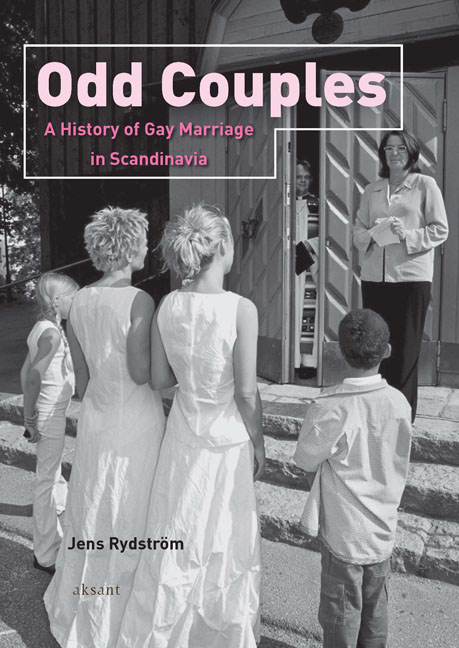Book contents
- Frontmatter
- Contents
- Preface
- Introduction
- Chapter One The Road to Registered Partnership
- Chapter Two Is Marriage what we want?
- Chapter Three Gay Marriage in Mainstream Politics
- Chapter Four Implementation
- Chapter Five Gender and Marriage Statistics
- Chapter Six The Next Step
- Summary and Conclusions
- Notes
- Appendix: Political Parties and Gay and Lesbian Rights Groups in Scandinavia
- References
- Index
Summary and Conclusions
Published online by Cambridge University Press: 20 January 2021
- Frontmatter
- Contents
- Preface
- Introduction
- Chapter One The Road to Registered Partnership
- Chapter Two Is Marriage what we want?
- Chapter Three Gay Marriage in Mainstream Politics
- Chapter Four Implementation
- Chapter Five Gender and Marriage Statistics
- Chapter Six The Next Step
- Summary and Conclusions
- Notes
- Appendix: Political Parties and Gay and Lesbian Rights Groups in Scandinavia
- References
- Index
Summary
There are three main focuses of this book: the internal discussions in the gay and lesbian movement, the reception of the ideas in mainstream politics, and the development of state recognition of same-sex couples from acceptance of childless couples to the recognition of rainbow families. Internal discussions had tended to oppose lesbian feminists and gay activists until the Danish law was adopted in 1989. After that, the other Scandinavian gay and lesbian movements stood seemingly united in their demands for registered partnership. The willingness of the political parties to heed the demands of the gay and lesbian movement depended largely on the overall political context, but in some cases it was influenced by energetic and well-directed lobby campaigns. The AIDS epidemic played a crucial part in creating a better understanding of the gay and lesbian movement, but it also gave rise to a perceived need for the disciplining of gay men.
Internal discussions
Prior to the introduction of the Danish law on registered partnership, on 1 October 1989, the discussions about gay marriage in the Scandinavian gay and lesbian movements were characterised by many different opinions, but there was a clearly distinguishable difference between men's and women's standpoints. The idea of some sort of legal regulation of stable same-sex relationships had been formulated ‒ mainly by gay men ‒ since the end of the nineteenth century. Lesbian thought, however, was nearly always linked to leftist feminist ideological currents, based on a striving for independence from male dominance and for economic and political self-determination. Most forms of feminist ideology carry a consistent criticism of marriage as an institution, and the idea of marital arrangements for lesbian couples was far from the agenda of most lesbian activists. It may also be true that the economically stronger male couples had more assets to safeguard against their biological kin than women and therefore had a stronger interest in a legal regulation of their relationship.
On the other hand, more lesbians than gay men raised children and would have an interest in creating an economically safe environment for them, as well as securing their right to foster their own children.
- Type
- Chapter
- Information
- Odd CouplesA History of Gay Marriage in Scandinavia, pp. 167 - 178Publisher: Amsterdam University PressPrint publication year: 2012



